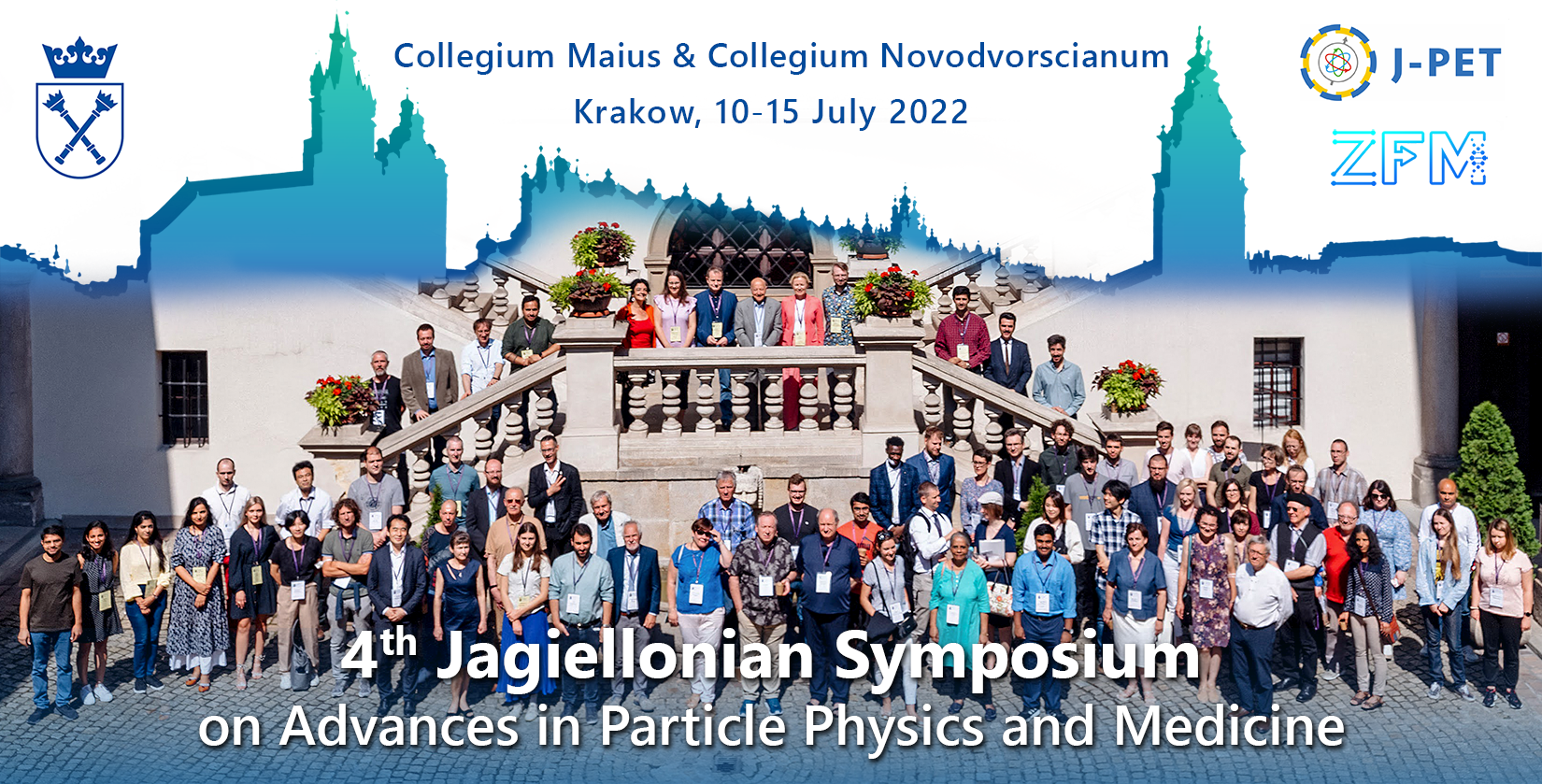Speaker
Description
Author: Neha Chug
Neha Chug1,2* on behalf of the J-PET Collaboration
1Faculty of Physics, Astronomy and Applied Computer Science, Jagiellonian University, Krakow, Poland
2Center for Theranostics, Jagiellonian University, Krakow, Poland
*e-mail: neha.chug@doctoral.uj.edu.pl
The Jagiellonian Positron Emission Tomograph is the first plastic scintillator based tomographic device used to test discrete symmetries in the charged leptonic sector [1]. One of such tests is for CPT symmetry, under the combined transformation of charge, parity and time reversal, in the decays of positronium atoms [2]. J-PET performed its first measurement for CPT symmetry test by searching for non vanishing CPT-violating angular correlations between the spin and orientation of decay plane of ortho-positronium (o-Ps) atoms, which is the triplet state of positronium [3, 4]. Sensitivity of testing CPT symmetry with the J-PET detector reaches the precision level of 10-4 [4]. Here we will discuss the prospects of improving the sensitivity of this test beyond the level of 10-4 by enhancing the photon registration efficiency using a new layer of densely packed plastic scintillators and a spherical annihilation chamber as a positronium production medium [5].
Acknowledgement:
The authors acknowledge support by the TEAM POIR.04.04.00-00-4204/17 program, the NCN grant no. 2019/35/B/ST2/03562 and 2021/42/A/ST2/00423, and the SciMat and qLife Priority Research Areas budget under the program Excellence Initiative - Research University at the Jagiellonian University.
References:
[1] P. Moskal et. al., Acta Phys. Polon. B 47, 509 (2016)
[2] B. K. Arbic et al., Phys. Rev. A 37, 3189 (1988)
[3] A. Gajos et al., Acta. Phys. Pol. A 137, 126 (2020).
[4] P. Moskal, A. Gajos et. al., Nature Communications, 12, 5658 (2021)
[5] A. Gajos, Symmetry, 12(8), 1268 (2020)

